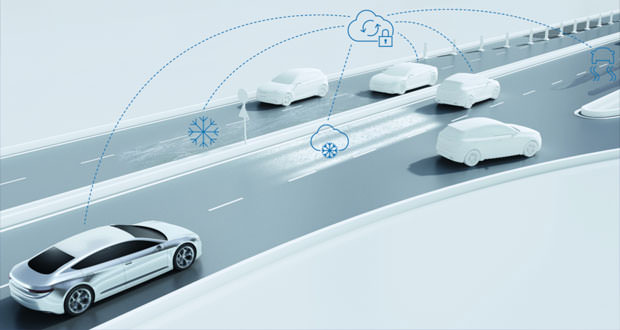Bosch: Alert service on real-time road conditions for self-driving vehicles
An interesting service useful for car safety is announced today, but the real plus is how it will be used tomorrow. Here is a brief summary of how it works and why it could be very important.
Bosch has announced the construction of a special signaling service for self-driving cars (but probably also for those with lower automation levels), aimed at increasing safety in the case of wet or icy surfaces. One of the members of the Bosch Management Board, Dr. Dirk Hoheisel, is convinced that such a system can play a key role in increasing the degree of security in potentially critical conditions.
For now nothing very clear, which is why we go into detail thanks to some information contained in the source, Engadget. Let’s start from what we have already said, namely that the conditions from which we want to defend more incisively are the wet and frozen funds. Scenarios typical of the North and deep North of the world in short (specularly also to the South, but being drastically less populated it is almost never considered, Ed).
Who is very good at providing weather and weather information in real time, especially at those latitudes (but not only)? The Finnish Foreca, which has among its specialties that of having specialized in providing information easily interpretable by self-driving means.
So here it is a system that is little more than an app? Of course not. The information coming from Foreca is manifold and the ” long ago ” is just one of the parameters that the Bosch system takes into consideration.
Foreca’s information is largely entrusted with the choice of whether or not to move manually instead of the autonomous, where this is possible. Information in real time of external temperature, any incoming rain a little further on, ice detected by real time signals can certainly increase safety compared to just lidar, radar and on-board sensors. At its launch in 2020, Bosch will rely on Foreca for a multitude of parameters, with which to dictate the line to the autonomously driven car.
But the beauty comes later, or potentially after 2020, if the system took hold. In addition to the large amount of information coming from Foreca, the Bosch cloud will play a key role, a series of information that, together with those of Foreca, could lead to an even higher level of security. An example to understand: all the cars that adopt the Bosch signaling system will send to the cloud a myriad of information, often as metadata, in order to make available information useful to anyone in security.
Let’s imagine taking a mountain road, preceded by other vehicles where at least one of them is equipped with the Bosch system. In real time, we could be warned of imminent rain coming (the car that precedes us has activated the wipers, the cloud has detected and warns us anonymously), the same in the case of ESP activation at a normal speed (likely ice).
This self-cloud-car dialogue is a plus already theorized in many conferences on the subject, but that will become reality in a not too distant future. Although you are talking about self-driving cars, such a system can be used on any type of vehicle, and someone does it already. Bosch is a very strong name, and the systems of this company are certainly destined to be taken into consideration by many big names. It is not at all to exclude that a system of this type can spread across different brands, to the benefit of safety.

